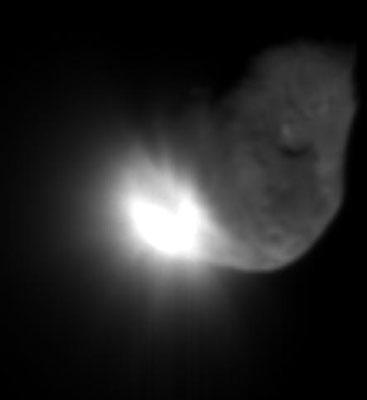PASADENA -- The excitement is building here at NASA-JPL, less than two hours from the time of the Deep Impact mission's intentional collision with the nucleus of comet Tempel 1.
Nobody knows exactly what's going to happen, and that's both the fun and the real scientific import of the mission. No collision of anything into a comet has ever been observed before, though such collisions must happen often with pieces of random asteroidal debris in space.
This collision will literally open up a window into the birth of the solar system. Comets are made of leftover material from the formation of the planets 4.5 billion years ago, and that material has been preserved in the deep-freeze of space ever since, except for the bits that boil away every time a comet gets close to the sun. This will be the first opportunity to see fresh material ejected from below the possibly crusty surface, and determine details of its composition and structure.
What will happen when the one-meter slug of copper slams into the comet? The members of the science team don't know, but they have a betting pool going on it.
The mission's chief scientist, Mike A'Hearn, told me earlier today that nobody on the team really believes in the most extreme possibilities -- but they can't be ruled out: Nothing at all might happen, if the comet is so porous that the impactor just slams right through it and out the other side; or, if the comet is particularly unstable, it might actually fall apart spectacularly. As unlikely as it may be, that would certainly be the most appropriate outcome, producing really dramatic July 4 fireworks.




